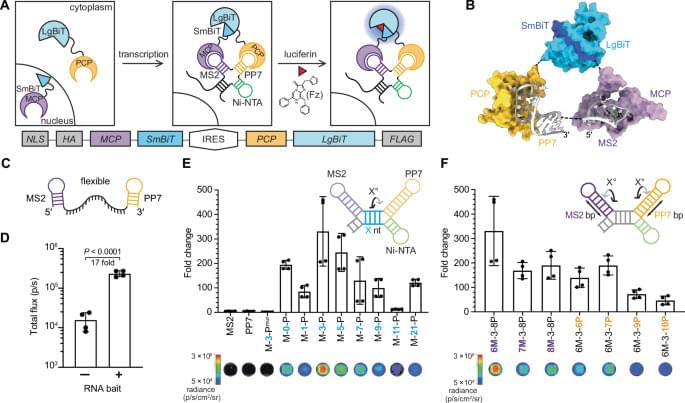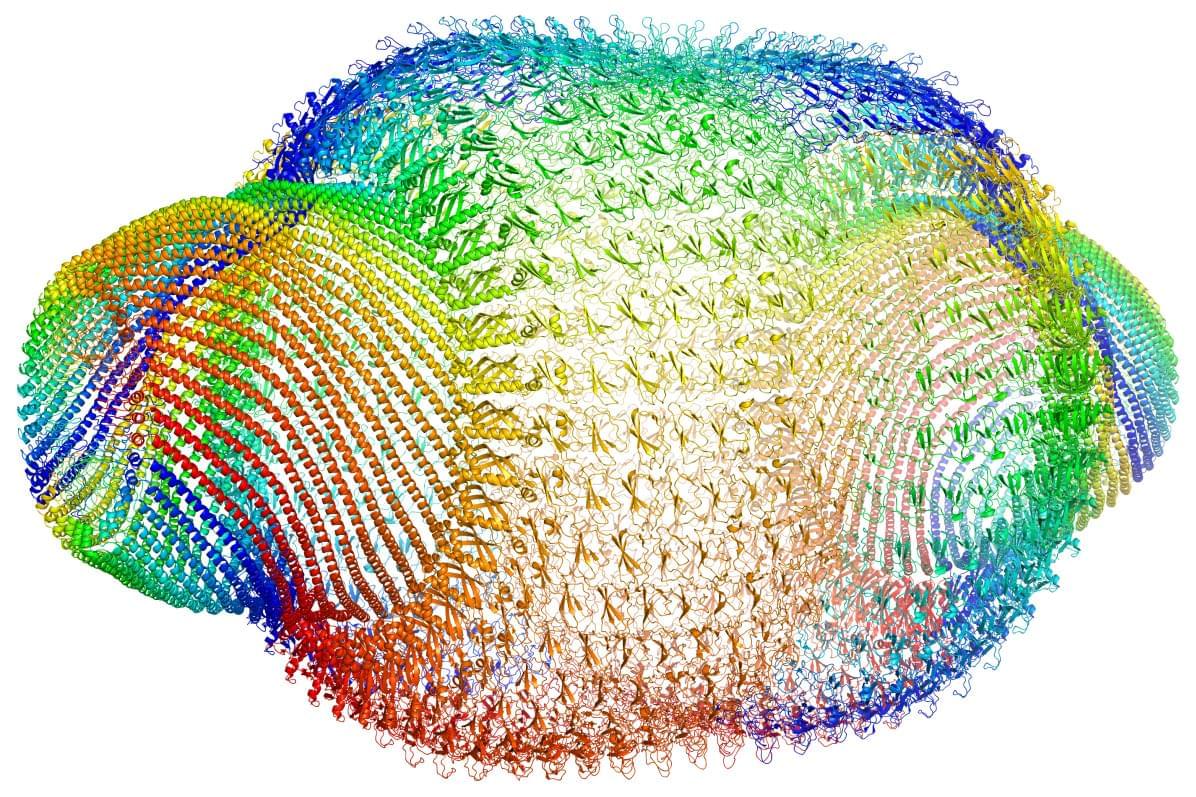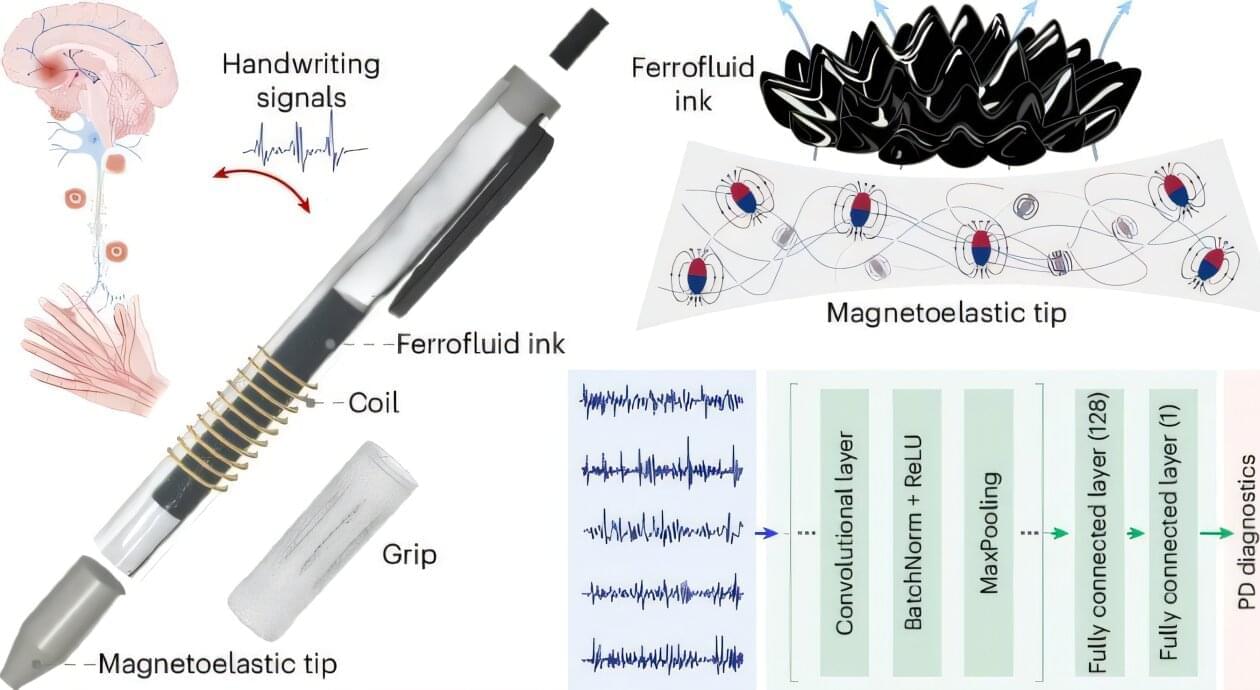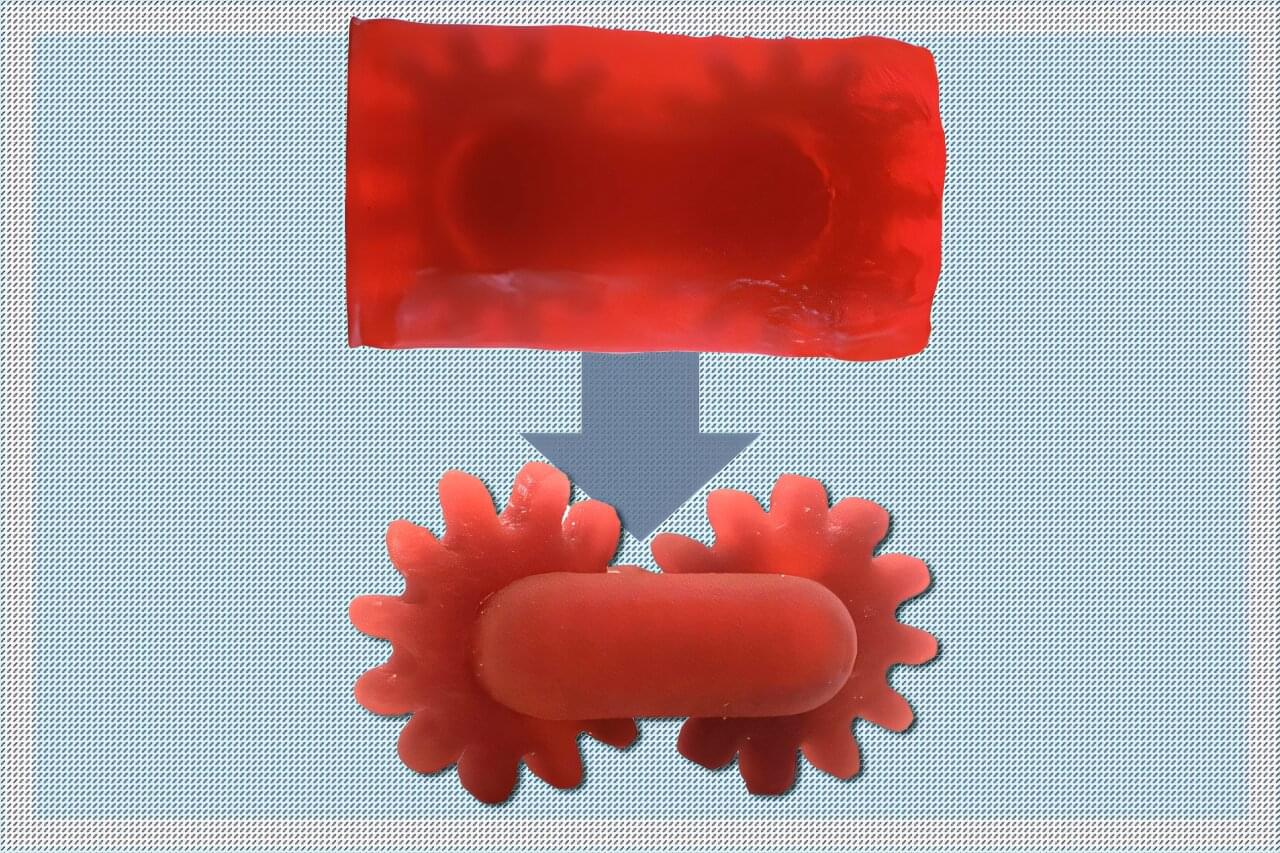Halbers et al. present a useful tool — a way of accurately tracking RNAs that only requires a small addition to a given RNA sequence and leverages modified split luciferase proteins for bioluminescent photon emission, circumventing some drawbacks of fluorescent methods.
Studying RNA dynamics in vivo often relies on fluorogenic approaches, but these can be hampered by factors such as limited sensitivity and sample autofluorescence. Here, the authors describe an ultrasensitive platform for RNA imaging, which features RNA tags that recruit light-emitting luciferase fragments.





